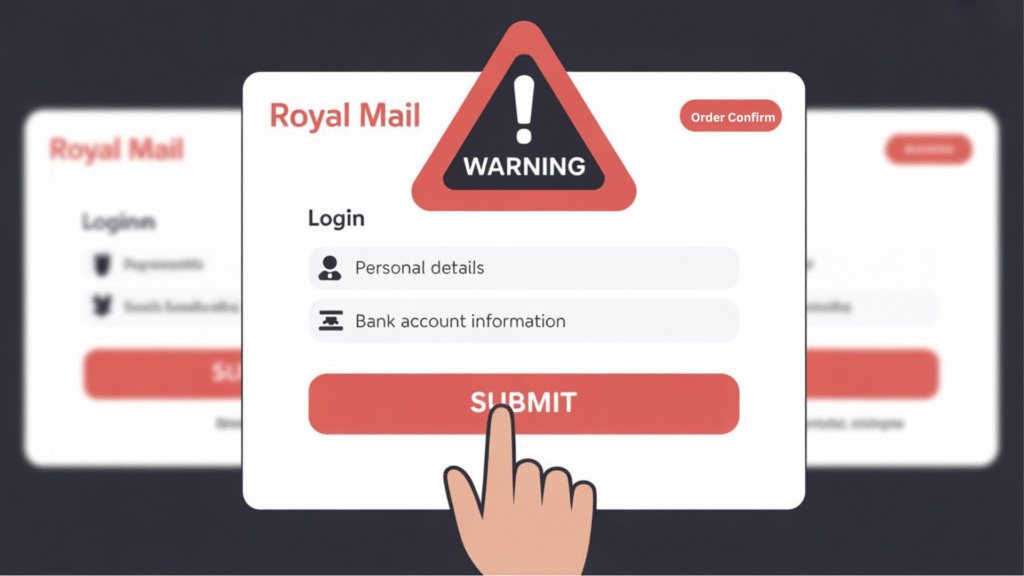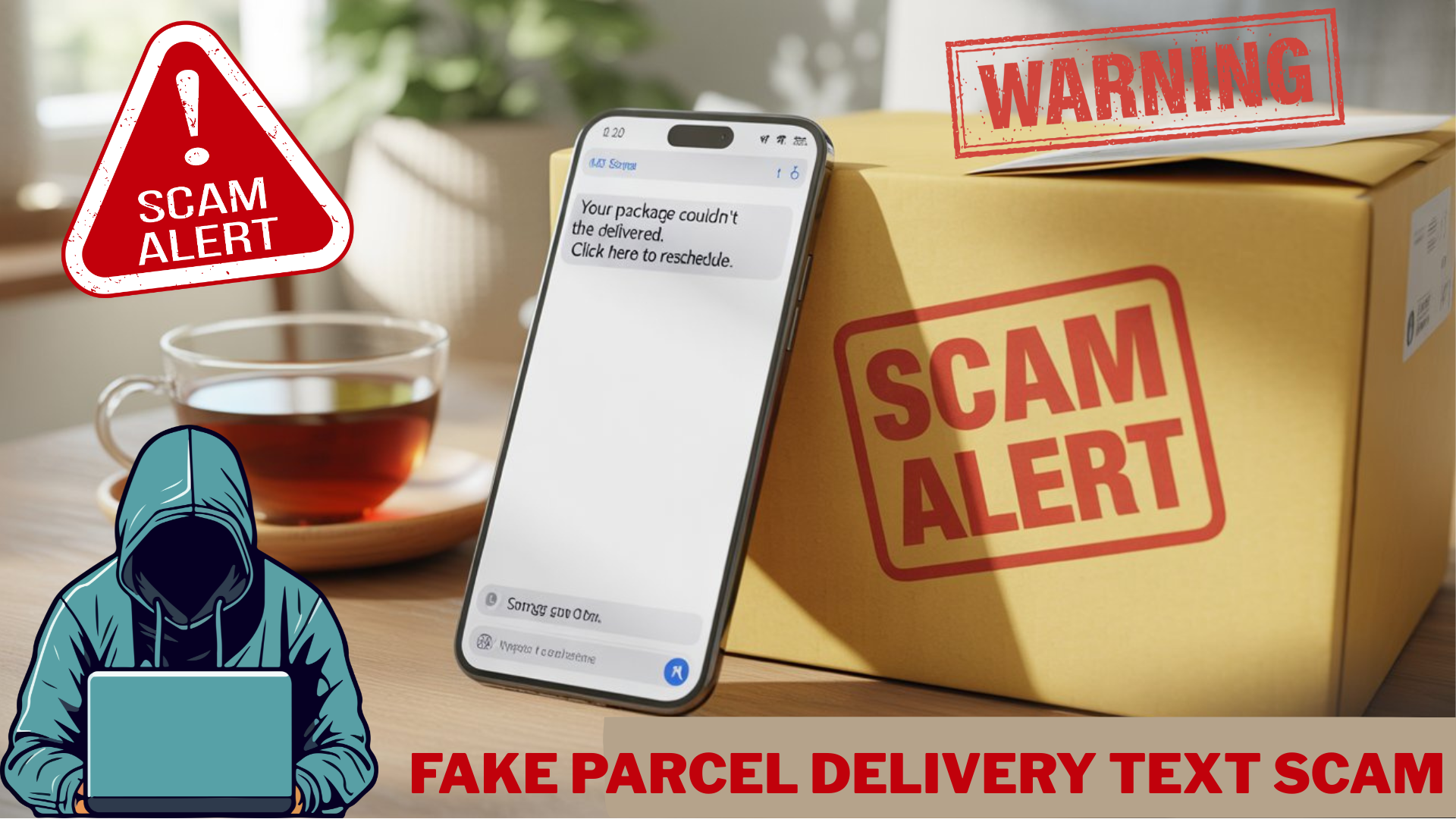Introduction: “Your Parcel Couldn’t Be Delivered…”
We’ve all seen it—a text message pinging on our phones, just when we’re expecting a delivery:
“Royal Mail: Your parcel is held at our depot. Reschedule delivery now: [link]”
It looks harmless. You’re probably waiting for a package anyway. So you click. And that’s where the nightmare begins.
Welcome to the fast-growing world of the Fake Parcel Delivery Text Scam—a digital trap that’s costing unsuspecting Brits thousands of pounds every day. It’s slick, sophisticated, and almost too easy to fall for.
In this guide, we’ll take you deep into the world of this scam:
✔️ How it works
✔️ Real stories from victims
✔️ Signs to spot
✔️ What to do if you’ve been targeted
✔️ How to protect yourself—and others
🚨 What is the Fake Parcel Delivery Text Scam?
The Fake Parcel Delivery Text Scam is a form of phishing where scammers send text messages impersonating popular courier services like:
- Royal Mail
- DPD
- Hermes (Evri)
- DHL
- Amazon
These texts typically claim:
- You missed a delivery
- A small fee is needed to reschedule
- A parcel is being held due to incorrect shipping details
Each message contains a link to a fake website that closely resembles the courier’s official site. Once on this site, you’re asked to enter personal information, including:
- Name
- Address
- Mobile number
- Bank details or card numbers
Once scammers have this data, they can:
- Steal money directly from your bank
- Commit identity fraud
- Sell your details on the dark web
It’s a digital con dressed as a convenience.
📈 Why Is This Scam Growing So Fast?
The rise of online shopping has turned every UK household into a potential target. According to Statista, over 80% of Brits made online purchases in 2024—meaning almost everyone is expecting a parcel at some point.
Scammers exploit this:
- You see a text at the right moment
- It feels relevant
- You act without second thought
That’s why the Fake Parcel Delivery Text Scam is now one of the fastest-growing digital frauds in the UK.
According to data from Action Fraud and NatWest:
- Reports of fake parcel scams surged by over 40% in 2024
- Losses have topped £20 million in the past 12 months
- Victims range from teenagers to pensioners, with a spike in 35–65-year-olds

💬 Real Story: “I Thought It Was Just £1.45…”
Meet Lucy, a 42-year-old from Manchester. She received a message from “Royal Mail” saying she needed to pay £1.45 to redeliver a parcel. She clicked the link, filled in her details, and thought nothing more of it.
Three days later, her bank account was emptied of over £3,000. The scammers had used her card and personal information to authorise multiple fraudulent transactions across Europe.
“It felt so real. The website looked exactly like Royal Mail. It even had a tracking page.”
Lucy’s story is unfortunately not rare.
🔍 What Do These Messages Look Like?
Here are some common examples of Fake Parcel Delivery Text Scam messages:
Example 1:
📦 “DPD: Your package is awaiting delivery confirmation. Reschedule here: dpd-delivery-uk.com/xyz”
Example 2:
📬 “Royal Mail: Your parcel is on hold due to unpaid postage fees. Pay £2.99 here to release: royalmail-verify.net”
Example 3:
🚚 “Amazon: Delivery failed. Please update your address to avoid return: amazon-support-link.com”
These scams are carefully crafted to bypass spam filters and convince even smart, cautious users.
🧠 How the Scam Works (Step-by-Step)
- The Hook
A realistic-looking text appears on your phone. You think it’s related to a recent order. - The Click
You click the link and are directed to a spoof website. - The Submission
You enter personal and/or financial details, believing it’s for re-delivery. - The Theft
Your data is used to withdraw funds, clone your identity, or sell on dark web markets. - The Aftermath
Victims often realise the fraud days or weeks later—when serious financial damage is already done.
🚩 Red Flags to Watch For
| 🔴 Scam Sign | ✅ What’s Legitimate |
|---|---|
| URL looks odd (e.g., royal-mail.uk.com) | Real courier sites end in .co.uk or .com |
| Message urges urgent action | Real services don’t pressure through SMS |
| Asks for payment via unknown site | Real courier firms use secure, branded platforms |
| Random number sender (not official ID) | Legit firms use verified SMS sender names |
If you’re ever in doubt, go directly to the courier’s website—not through any link you receive.
🛡 What To Do If You Receive a Fake Delivery Text
- Do NOT click the link
Delete the message immediately. - Report the scam
- Forward the text to 7726 (free service by UK phone providers)
- Report the scam at actionfraud.police.uk
- Warn others
Share a screenshot or alert family/friends, especially elderly relatives. - Check your orders manually
If you’re unsure whether a delivery is real, visit the courier’s official site or app and use your tracking code.
🔐 What To Do If You Fell for It
If you’ve already clicked the link or entered your details:
- Contact your bank immediately
They can freeze accounts, cancel cards, and help recover money. - Change passwords
Especially if you used the same one across multiple accounts. - Report to Action Fraud
Even if you didn’t lose money, reporting helps prevent further cases. - Run antivirus/malware scans
If you clicked the link from a mobile or computer, scan your device for infections.
🏡 Who Is Being Targeted the Most?
While scammers cast a wide net, certain groups are more frequently hit:
👵 Older adults – May not be familiar with phishing scams
📦 Frequent online shoppers – Expecting parcels more often
👨👩👧 Busy parents – More likely to click without questioning
🧑💼 Remote workers – Get personal and business deliveries daily

🌐 Courier Companies Are Responding
Royal Mail, DPD, and Evri have launched awareness campaigns and official scam advice pages.
Royal Mail:
“We never ask for payments via text message. If you’re unsure, check our website or call us directly.”
They also recommend checking your parcel using the tracking code found in your original order email or app—not from texts.
📢 The Rise of SMS “Blaster” Scams
A new and worrying trend is the use of SMS blaster devices—tools that mimic real mobile towers and can send scam texts to all phones nearby, without needing a list of numbers.
Police in the UK warn that scammers are deploying these devices in public areas like train stations, markets, and shopping centres. This makes the scam even more dangerous, as people can receive fake texts in real-time as they’re expecting actual parcels.
✅ How to Stay Scam-Free
Here’s your checklist to avoid the Fake Parcel Delivery Text Scam:
- ❌ Never click on unknown links
- 🔍 Verify courier messages through their official website or app
- 🧓 Talk to older relatives about this scam
- 🛡 Use antivirus and update your phone regularly
- 📱 Block scam numbers when possible
- 🚔 Report all attempts to Action Fraud and 7726
📣 Community Action Matters
Scammers thrive in silence. The best way to fight back is by:
- Sharing posts like this on Facebook, Instagram, or WhatsApp groups
- Creating posters or flyers for libraries, GP surgeries, or senior centres
- Contacting local media to help spread awareness
- Reporting suspicious numbers to your mobile provider
💬 Final Thoughts
The Fake Parcel Delivery Text Scam is a stark reminder that cybercrime isn’t always high-tech—it’s about timing, trust, and trickery. The good news? These scams are preventable.
With awareness, vigilance, and a little community action, we can all stay a step ahead.
So the next time your phone buzzes with a “missed delivery” alert, think twice—then delete.
Read More Blogs – https://scamfreeworld.co.uk/winter-fuel-allowance-scam/

